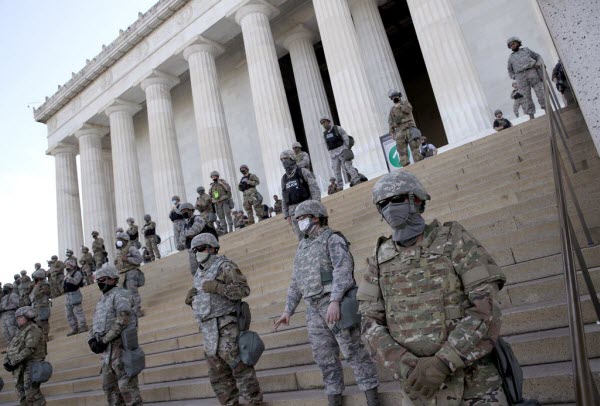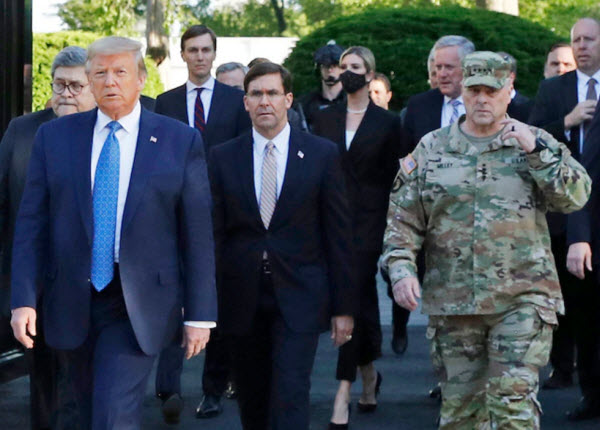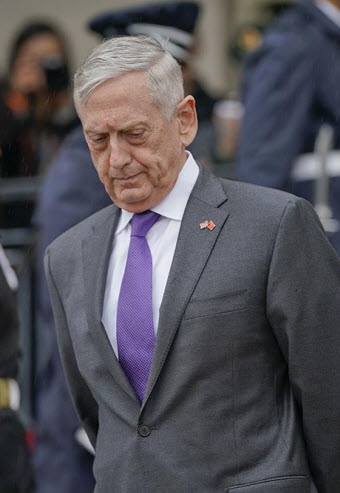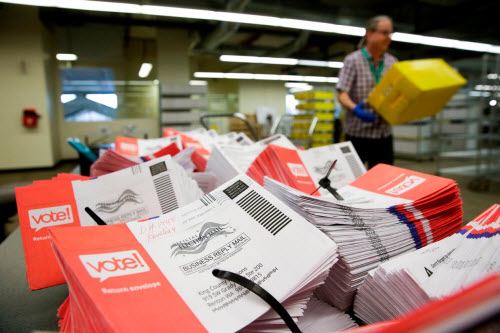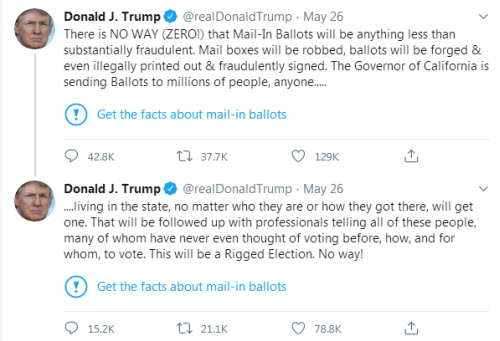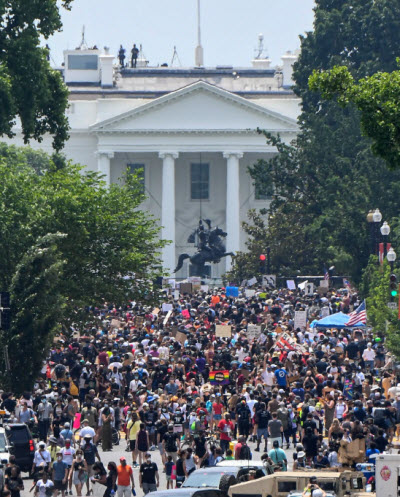A Country So Divided Even Wearing a Mask Is Political
President Trump has said that people choose to wear masks to show dislike of him. He has it backward. Those wearing masks hope to avoid a horrible disease. It is those who refuse to wear a mask who are making the statement, showing their support of Trump by following his lead: the example the president has set to not wear a mask if it doesn’t suit you. Perhaps the virus will take note of your vanity concerns and move on to the next person.
“I think wearing a face mask as I greet presidents, prime ministers, dictators, kings, queens, I don’t know, somehow, I don’t see it for myself. I just don’t.”
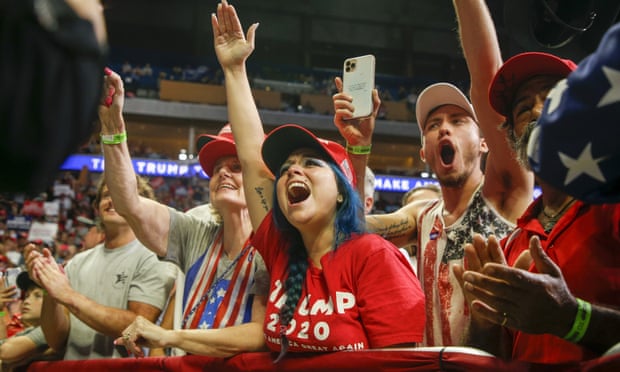
Rally in Tulsa: No distance, no masks, except for a small minority.
The strange irony is that Trump, who views restoration of a healthy economy as key to his re-election, condones the very behavior necessary to keep people healthy enough to rebuild that economy.
There may be a deadly pandemic loose in the world, but for Mr. Trump self-image takes priority. A mask would make him appear weak, seems to be his thinking, as if his mask-free countenance will make SARS-CoV-2 sound retreat. With everyone around him tested daily, he can feign bravery, strutting defiance for his followers to see. Playing to them, he mocks Joe Biden, saying he’s hiding in his basement, and fearfully masked when he ventures out.
His followers copy him, adopting ideological tribalism. To that they add their own proud self-image of being an American standing tall for freedom and personal liberty. No one gets to tell them what to do.
Former Major League Baseball player Aubrey Huff says, “Hell, I would rather die from coronavirus than to live the rest of my life in fear and wearing a damn mask”. No you wouldn’t, Aubrey. A Costco employee asks a member to wear a mask per company policy and is told, “I’m not doing it because I woke up in a free country”. Others say that it is overreach of the government at any level to require somebody to wear something. The Washington Post talked to Max Parsell, a 29-year-old lineman for a power company. “Making individual decisions is the American way”, he said at a rural crossroads south of Jacksonville. “I’ll social distance from you if you want, but I don’t want the government telling me I have to wear a mask.” Covid-19 is sure to back off in respect of so principled a stance.
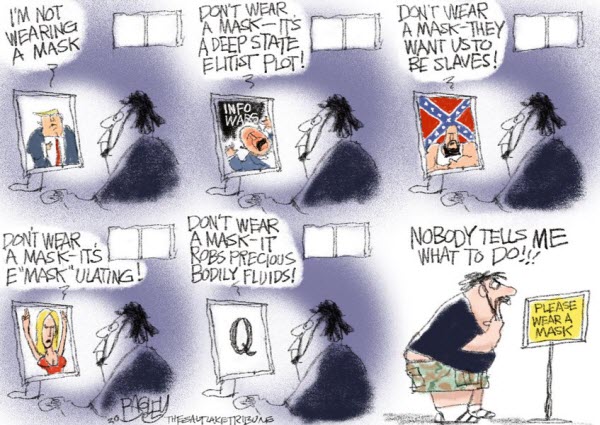
Bagley. The Salt Lake City Tribune.
The rest of the world looks on, convinced that Americans are idiots, with by far the highest death rate to show for it, with spiking resumed as the result of reopening, with a populace to blame for not bothering with preventive measures. The nation’s emphasis on the rights of individuals sets the United States apart from many other countries, says Dr. Anthony Fauci, director of the National Institute of Allergy and Infectious Diseases. But they have gone off the tracks, turning this into a fight against the government, and not the implacable virus indifferent to their posturing.
Vice President Pence thinks the threat of a second wave is overblown. Our newest epidemiologist, he even wrote a not-to-worry op-ed. Fauci reminds him that the first wave hasn’t ended. Case counts have been rising in over 20 states, hitting records in 12 states, the highest daily count since April as this is written. American deaths have surpassed 120,000 with a projected 200,000 by September, a frightening number that owes to the factoring in by the forecasting models of the lax use by Americans of protective measures. Covid-19 is not happening to us. We are doing it to ourselves.
mixed messaging
Distancing will prove impractical in cities, in offices, in any return of large gatherings from concerts to sports, but a steady flow of studies tells us that masks cut down the virus transmission rate. Both the Centers for Disease Control and Prevention (CDC) and the World Health Organization (WHO) now recommend people wear cloth masks at a minimum as a proven prevention strategy. That wasn’t always their message. As the pandemic began to take hold, they counseled that masks were unnecessary. Dr. Fauci later explained that the real reason for downplaying masks was concern that people would hoard them. Already in short supply from government’s failure to plan for the someday certainty of a pandemic, masks were needed foremost by health care workers on the front lines.
The U.S. was laggard in confronting this new coronavirus in several ways. One was the slow adoption of masks, which is still the case. In video footage before the pandemic gained its foothold here, we had seen the populations of other countries, chiefly in Asia, flatten their curves and gain control. How? In the countries that were most successful in controlling the virus, the people wore masks.
What could have been more obvious? SARS-CoV-2 is infinitesimal, a thousandth the width of a human hair, but anything one can fashion — bandanas or T-shirts or underwear — to put in the path of droplets spewed into the air by people talking, coughing, sneezing, shouting, laughing, will snag virions and cut down the number that make it through. That’s important. It’s the the matter of dosage. The medical community (and a dose of common sense) believes that a lower dose of virus entering the body may be at least one explanation why some people experience mild illness compared to those who wind up in ICUs. So, yes, avoid closed spaces and lingering but wearing masks may prove to make the vital difference.
The more astute members of the public thought masks made sense sooner than the professionals. Newspapers gave us patterns and YouTube videos showed how to make our own masks at home. We experimented with material to fortify the flimsy drugstore masks, if even they could be had, patching in cutouts of coffee and vacuum cleaner filters (the latter almost as good as N95s) into the scarves to tie across our faces.
The latest: Curved shields of clear plastic covering the face from top of forehead to below chin. So far only on hospital personnel in close quarters caring for the Covid sick, they may be coming into wider use with the public. They add protection of eyes, thought to be a path in for Covid-19, and as a bonus, they don’t hide our faces.
back on stage
In the midst of this, Donald Trump wanted to resume the rallies that the pandemic has denied him for several months. More than a million of his fans applied for tickets, according to his campaign. Health experts were dismayed that the Tulsa, Oklahoma, venue chosen for the event holds 19,200 people, and they would be of a sort who will pay no heed to preventive guidelines. Taking no responsibility for the coronavirus hot spots that could sprout from the conclave, the form for tickets asked applicants to sign agreement that they “voluntarily assume all risks related to exposure to Covid-19 and agree not to hold Donald J. Trump for President Inc.” liable should they become ill.
Eight members of the campaign’s advance team and two Secret Service agents have tested positive for Covid.
Fortunately, only 6,200 showed up. Masks and hand sanitizer were handed out, but there they were, packed close together in the seats, with a smattering of masks in view. The president boasted that the U.S. has now tested more than any other country and took us into his world of inverted logic saying,
“When you do testing to that extent, you’re going to find more people, you’re going to find more cases. So I said to my people, slow the testing down, please!”
His handlers said he was joking, as if Covid-19 testing is a subject for comedy, but he has said it twice before, and after Tulsa undercut them, saying, “I don’t kid”. He told reporters on May 10th:
“We do, by far, the most testing. If we did very little testing, we wouldn’t have the most cases. So, in a way, by doing all of this testing, we make ourselves look bad.”
That was in keeping with his wanting 3,500 passengers to remain on a cruise ship off the California coast so they would not add to the total sick count within the United States. “I don’t need to have the numbers double because of the people on that ship”, he said. On May 14th, there it was again:
“When you test, you have a case. When you test, you find something is wrong with people. If we didn’t do any testing, we would have very few cases. They don’t want to write that. It’s common sense.”
On June 25th, campaigning in Wisconsin, he made the most dumbfounding statement yet:
“If we didn’t test, we wouldn’t have cases. But we have cases because we test”.
Confronted after Tulsa, the president said,
“If it did slow down, frankly, I think we’re away ahead of ourselves, if you want to know the truth. We’ve done too good a job”.
sociopathy
Where the mask heterodox element of the public becomes unforgivable — those who proclaim government cannot tell them what to do, the arrogant who endanger others by refusing to wear masks — is when they become sick and present themselves at hospitals across the nation where they will add burden to an overworked health system and put at risk the care workers who have already shown indomitable courage battling this scourge in service to us. More than 400 health care workers have died, according to the CDC, and that is a significant undercount, they believe. The nation’s largest nurses union, National Nurses United, puts the total much higher at 939 fatalities based on reports from its chapters around the country, social media, and obituaries.
We have to worry about when those doctors and nurses, emotionally wrung out, suffering from the PTSD of daily seeing people dying, emotionally distraught over helplessness in stopping this contagion, suffering from feelings of guilt in the belief that they have failed — we have to worry that they will decide they have had enough and finally quit to preserve what’s left of their sanity. For those proud imbeciles who intend to shun responsible measures such as mask-wearing, whose immoral conduct in copying the immoral Trump will contribute to Covid-19 spikes, who will themselves then fall upon an exhausted health system asking for help, exposing health care professionals to the sickness they bring, for them can’t there be a special place in Hell reserved?

